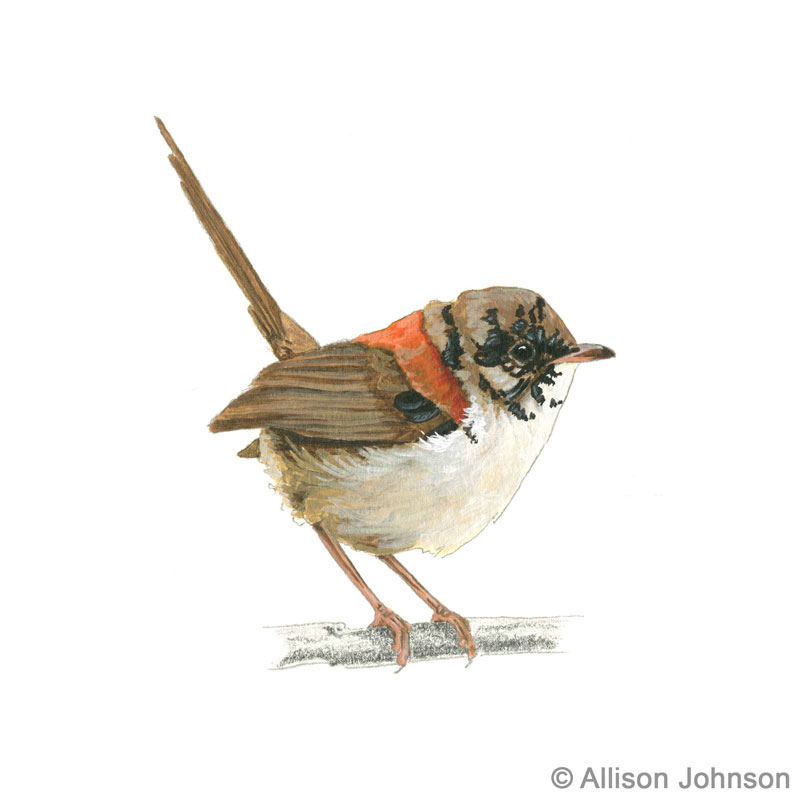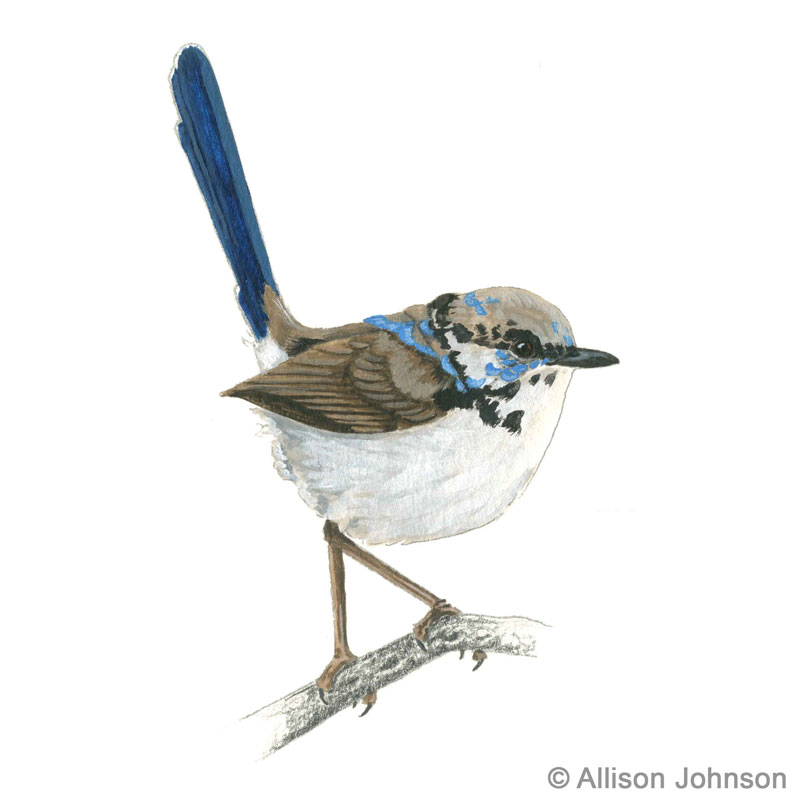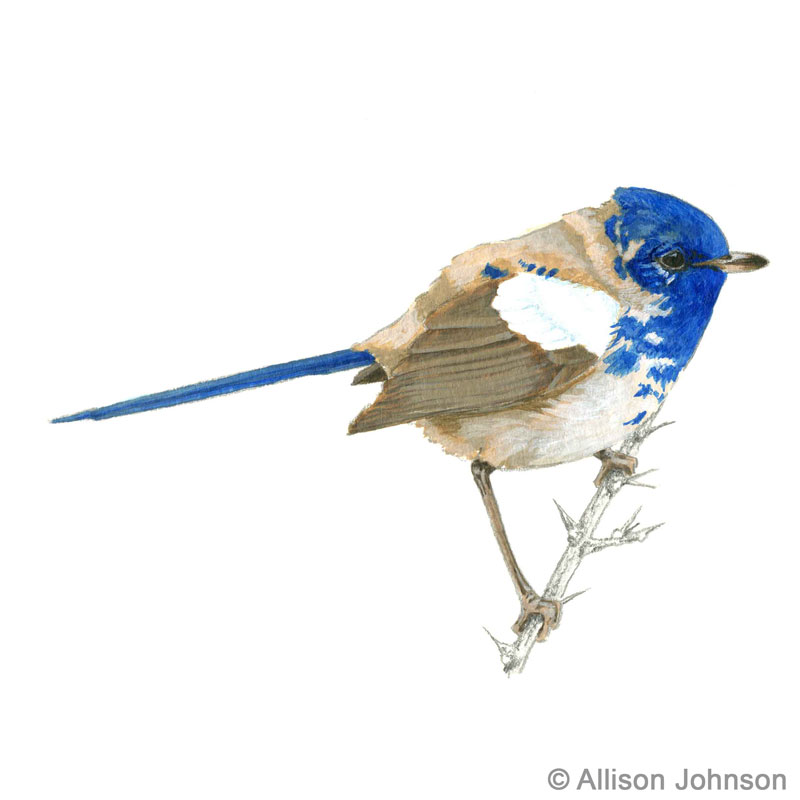In May 2022 we published a paper working with photographers, birders, and citizen scientists from around Australia describing three new instances of hybridisation in fairywrens and providing more information on a previous report. See below for summaries of the fairywren hybrids that have been found and read our paper here.
Red-backed x Superb Fairywren hybrids
The first hybrid of these two species was discovered in 1980 by Neil McKilligan, Malcom Wilson, and colleagues who described it in this way:
"The bird's plumage was bright and boldly patterned. It can be most easily visualised if one imagines a bird with the head of a Superb Fairy-wren and the body of a Red-backed Fairy-wren, except that the apparent hybrid had two shoulder patches of orange-gold." (Wilson, 1983)
Next, from 2006 - 2009 Greg Nye, Petr Sramek, and Brenek Michalek observed at least three hybrids of these two species in downtown Brisbane at Moorhen Flats Recreation Area. Here's a video from Greg of one of the hybrids: https://macaulaylibrary.org/asset/362699341
The most recent observation comes from Gladstone, Queensland where Martin Ross, Tracey Welburn, Alicia Newport, Deb Walker, and others have been following at least two hybrid males. See some of Tracey's photos on the right.
For more information on these hybrids, see our paper, and a paper by Martin Ross and Allan Briggs on the behaviour of the Gladstone hybrids.

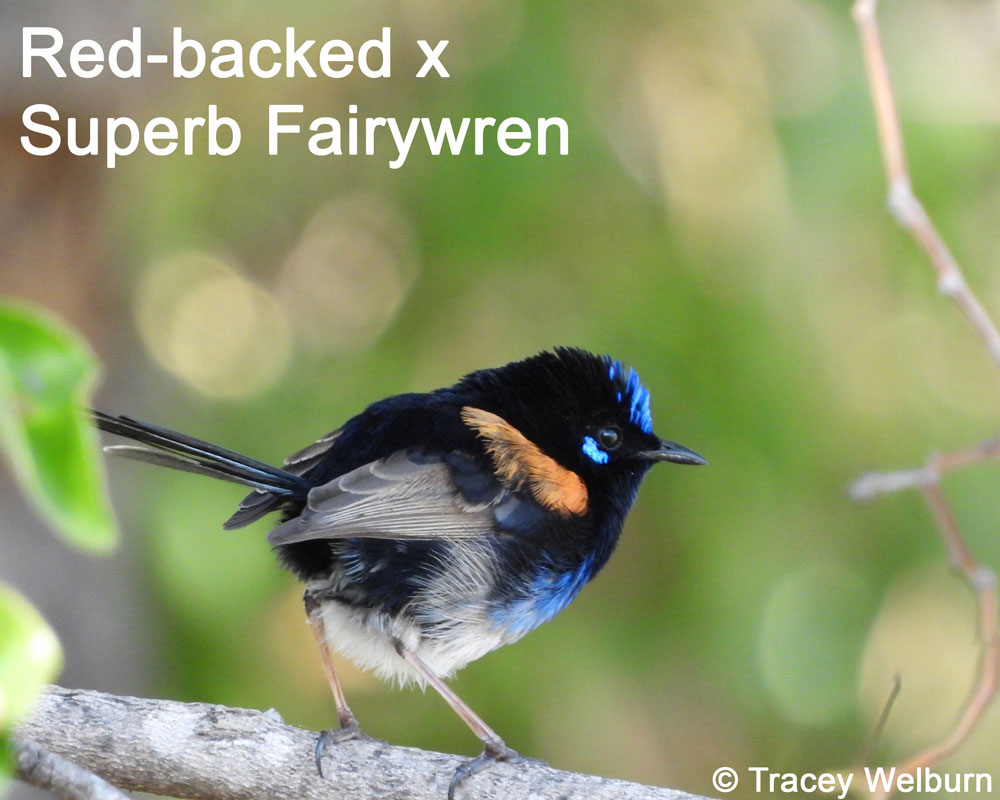
White-winged x Superb Fairywrens
The first hybrids between these two species were found in 2013 when Peter Haines sighted multiple male fairywrens with atypical plumage at Hart Lagoon in South Australia. In describing the bird, Peter wrote:
"I observed a male fairywren that I had not seen before with colouring and markings resembling that of a Splendid Fairywren, Malurus splendens, but with white “wings” or shoulder patches." (Haines, 2014)
Next, in 2014, Greg Licence found two male hybrids at Thunder Swamp, north of Bendigo Victoria.
The latest sighting of a hybrid between these two species comes from Oakey, Queensland where Glenn and Karen Roman have been tracking a single male hybrid since 2020. See some of Glenn's photos on the right.
For more information on these hybrids see our paper.
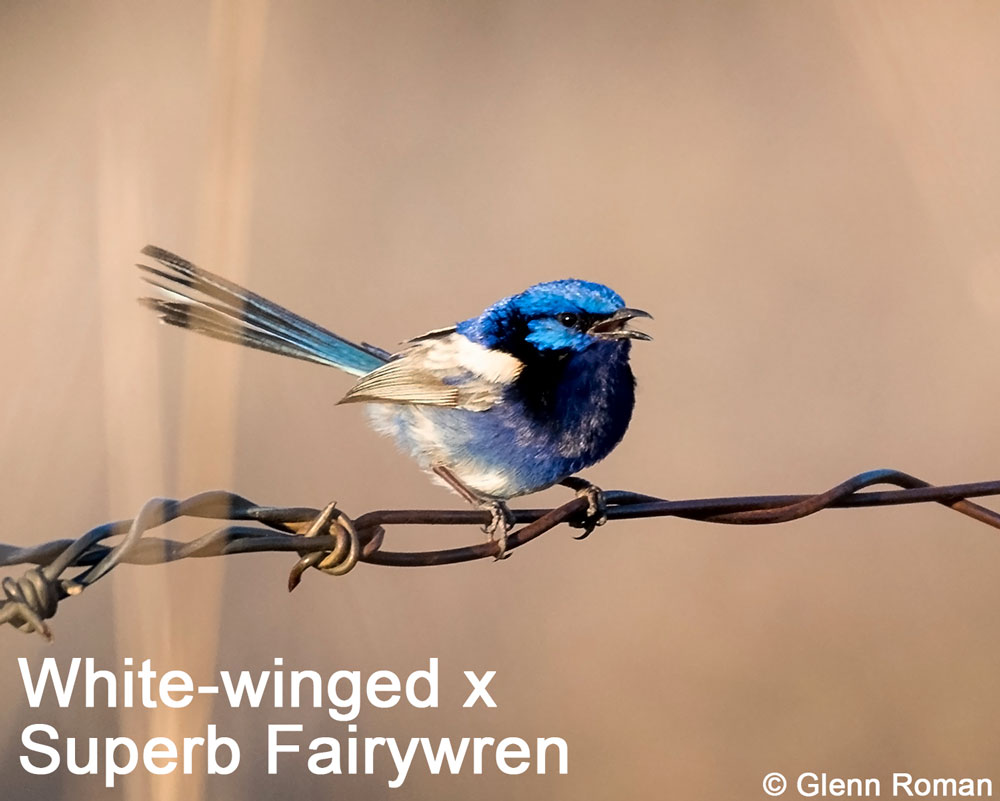
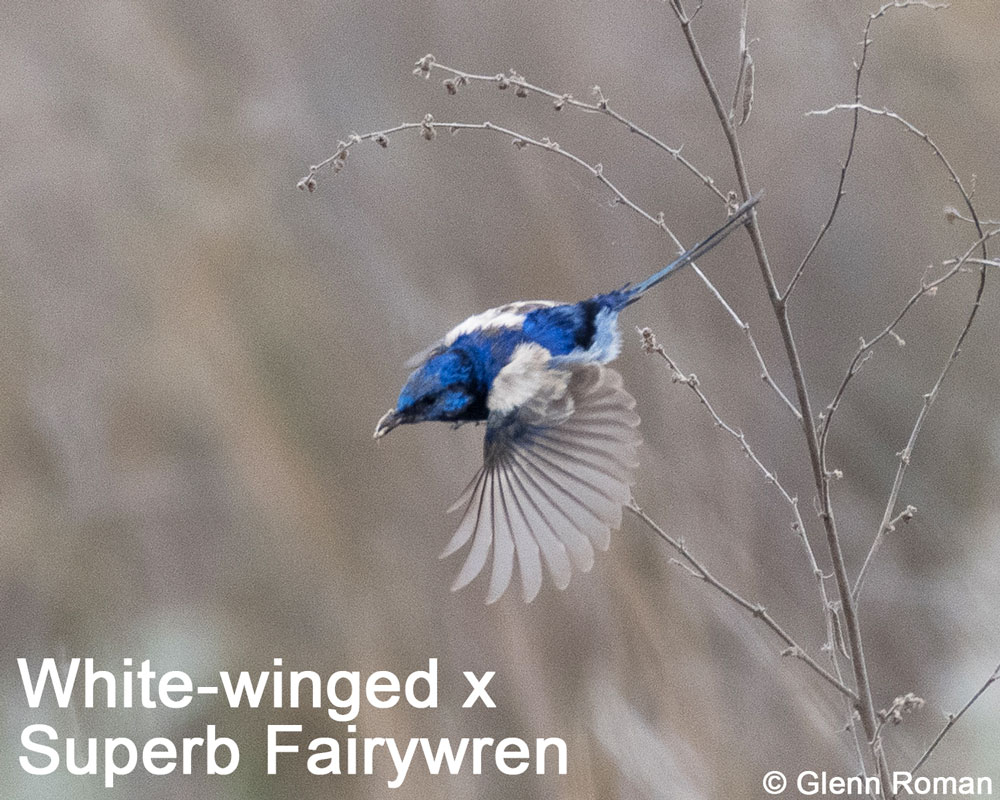
Variegated x Purple-backed Fairywren hybrid zone
The only currently recognized hybrid zone between two fairywren species is the Variegated x Purple-backed Fairywren hybrid zone across eastern Australia's Great Dividing Range. These two species have diverged relatively recently between 62,000 and 312,000 years ago (McLean et al. 2017a) and show introgression of mitochondrial genes where their ranges meet (McLean et al. 2017b).
Identifying a hybrid of these two species without DNA analysis would be very difficult since their plumages are so similar.
See McLean et al. 2017a and McLean et al. 2017b for more information on these two species and their hybrid zone.
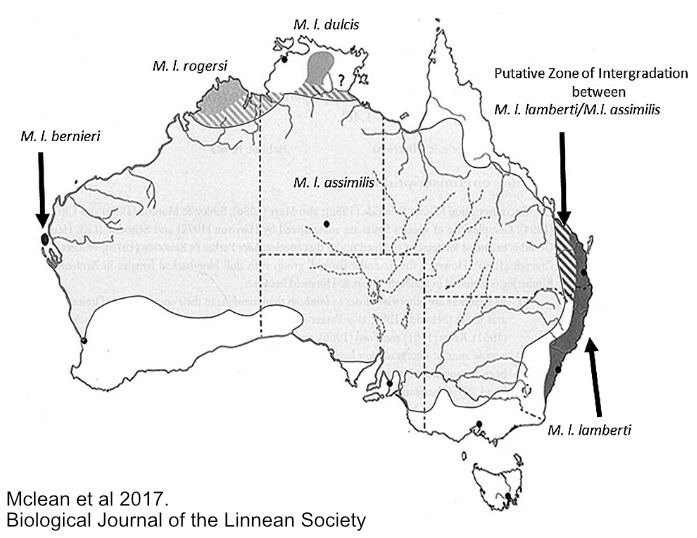
Have you seen a hybrid fairywren?
We're still interested in new sightings and sightings of previously-reported hybrids! Any two fairywren species could potentially create a hybrid, and a hybrid will likely retain plumage characteristics of both parent species. Note that most hybrid females will be very difficult to identify since most female plumages are very similar.
Let us know if you have seen an odd fairywren that could be a hybrid via fairywrenproject@gmail.com. Photos are especially helpful.
Note: It might be easy to confuse moulting males with hybrids. Males in intermediate plumage often look funny but moult between plumage types is completely normal and often takes a few weeks.

